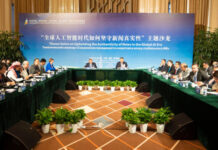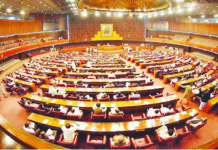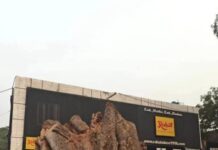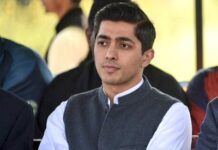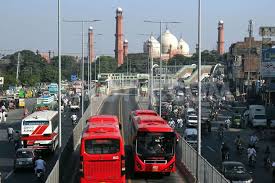A few days back, I was at dinner with a friend currently posted as in-charge of a police station in Lahore. This police station covers a huge and important area of Lahore and its outskirts and includes one of the most important entry-exit points of the city, the Babu Sabu interchange. Thousands of people enter and leave the city through this checkpoint daily as it has the biggest bus terminal in Lahore.
As the discussion ensued about policing in the vicinity, I was told by my friend the intricate details of how urban security and policing work. And how the abovementioned area shows a dilemma of urban dwelling.
He continued, “If you happen to go there, you will see the infrastructure and transportation have become a plight. Buildings have been constructed without regularization. There are overwhelming numbers of illegal encroachments. The transporters have been capitalizing on illegal and disallowed businesses. There are criminal gangs fully functional.
The illegal drugs distribution network has grown and you would see dozens of drug abusers lying in poignant condition here and there. The congestion of inhabitants is inordinate and there are many unwarranted people living without any identification documents and data. The crime level is alarmingly high and many young people are involved in illicit activities.
Since the rest of the province remained underdeveloped it has contributed to the migration of overwhelming numbers. The unchecked and unlawful constructions and encroachments saw devastating deforestation. Thus, Lahore today stands as one of the most polluted cities in the world, choked by smog and ever increasing pollution contributing to various lung diseases.
The unchecked and illicit development of the outskirts of Lahore beyond the interchange and even the River Ravi are adding to the problems” And then he continued, as how the policing had come up against many impediments while facing all these problems.
The sight he showed me through his discussion was despairing but equally perilous. Though a small area of the Metropolitan Corporation has been mentioned. the beautiful ancient city of Lahore has grown into a gloomy quagmire of urban settlement as a whole. The population of Lahore has increased by 200 percent in the last two decades. Its current population stands at almost 15 million people. Its annual population growth rate stands at almost four percent and it is one of the most densely populated cities in the world. The demographics of the city show a picture of unprecedented growth in the last two decades.
Being the capital of Punjab and the centre of iyd politics, Lahore has been subjected to highly reckless urban development by governments and administrations since 2001. Since the city gets the highest developmental budget and provides most of the facilities for health, education and employment as compared to the rest of the province and the country, it has seen prodigious migration of people in recent years. To absorb the growing number of inhabitants, Lahore has expanded through its existing boundaries virtually in all directions in a rampant manner. It reminds me of the words of Patras Bukhari that there is a Lahore outside Lahore. Today if you travel on the GT road in the northern side of the city and on the Ferozepur Road in the southeast, you will witness the extent of the growth of Lahore. It has engulfed all the towns in its outskirts and is rampaging to engulf even the cities of Kasur, Sheikhupura and Kamoke in the nearby future.
This rampant spread of Lahore and unchecked population growth has brought massive problems. They include the congestion of residential and commercial areas, failing infrastructure, pressure on the existing facilities and resources, increased criminality levels, deforestation, highly alarming pollution levels, fractured and overburdened health and educational facilities, fragile public transport, massive illegal encroachments, swelling public health issues, underground water scarcity, drug abuse, illegal construction, and clogging of Traffic, apart from others.
The factor which contributed to this whole dilemma of getting the beautiful city of Lahore to its current state of a vandalized metropolitan area, are both administrative and political. Lahore has always been devoid of a properly researched and sought development plan. The Lahore Development Authority (LDA)’s incompetence and highly corrupt policies under the political umbrella should be blamed for it.
Lahore has grown horizontally instead of vertically due to a massive number of residential real estate projects. Most of these housing societies were constructed illegally. If we travel on Lahore Ring Road today, we won’t be able to see a single area on both sides that is free of commercial and residential real estate projects. The congestion of housing societies has become a swamp. The public transport system failed owing to political reasons as the previous government only developed two public transport routes to win electoral support. The sheer lack of planning has seen that these routes only cover 25 percent of the population and the rest of the city remains at the mercy of rotten transport. The private vehicles thus result in clogging of traffic.
Since the rest of the province remained underdeveloped it has contributed to the migration of overwhelming numbers. The unchecked and unlawful constructions and encroachments saw devastating deforestation. Thus, Lahore today stands as one of the most polluted cities in the world, choked by smog and ever increasing pollution contributing to various lung diseases. The growing construction also contributed to falling Water Table and the city may see a drought very early in the future. The resources are showing a famine already.
Thus, the whole predicament of urban settlement has become a nightmare and it raises a question, “Are we inhabiting the uninhabitable?”

